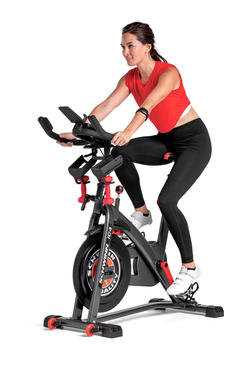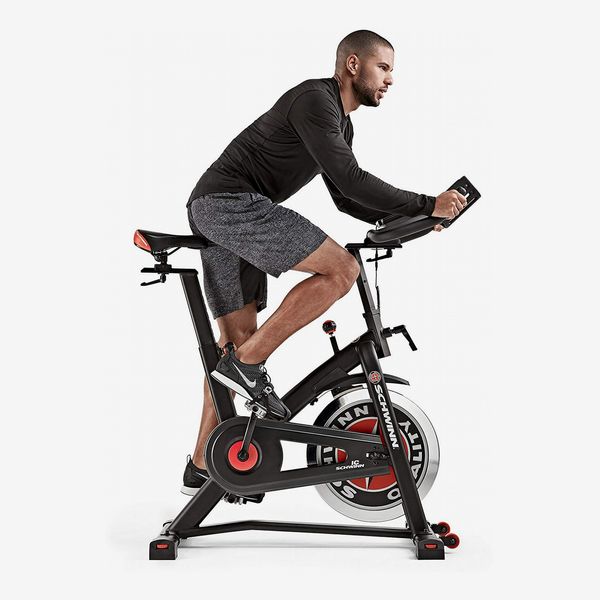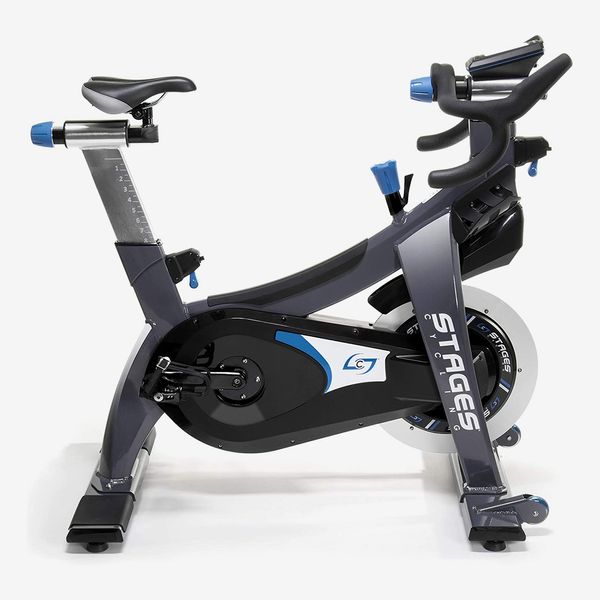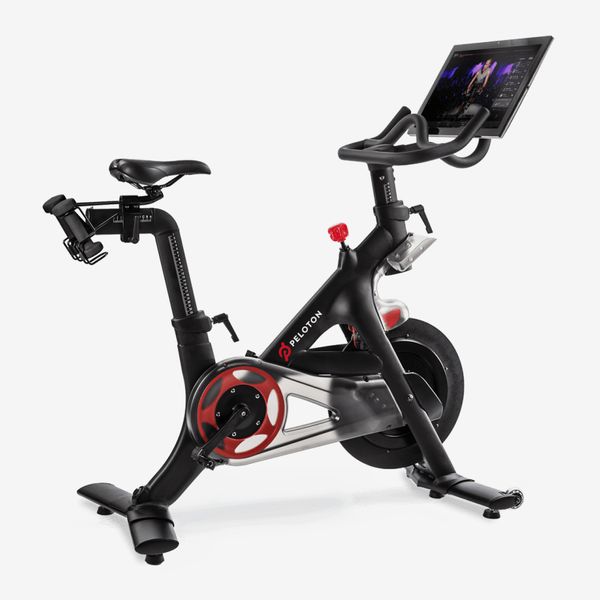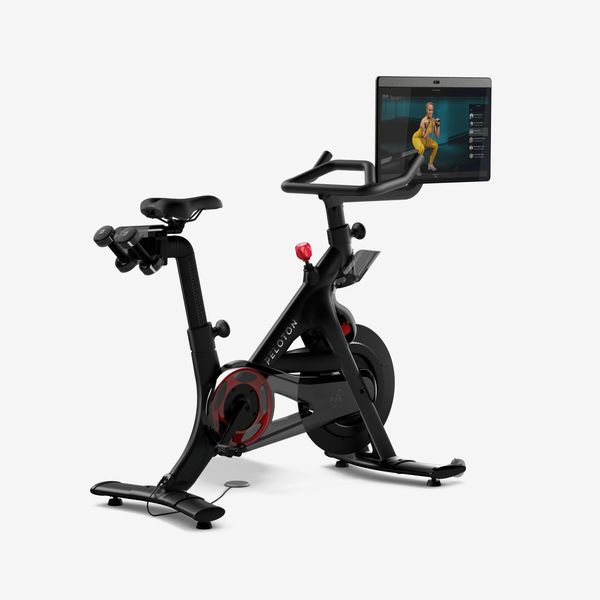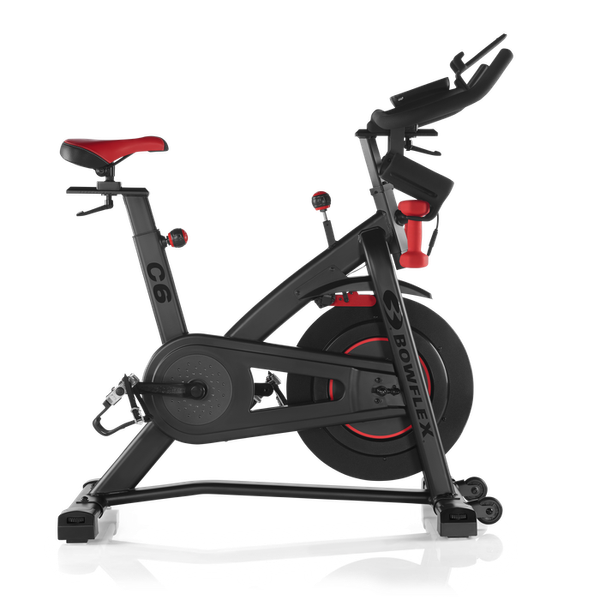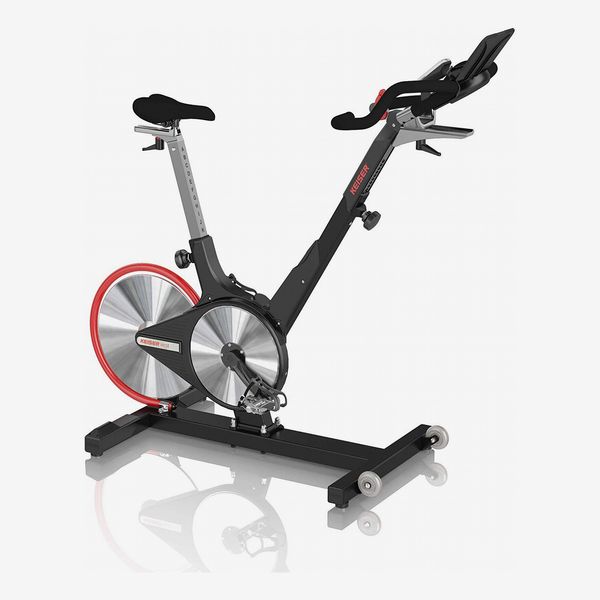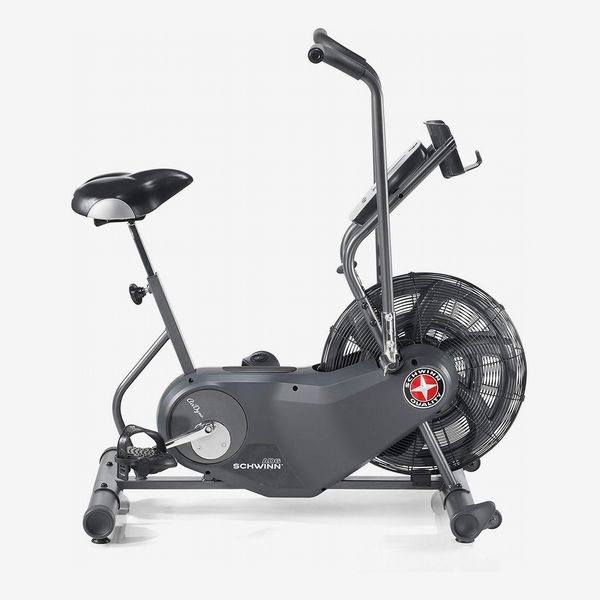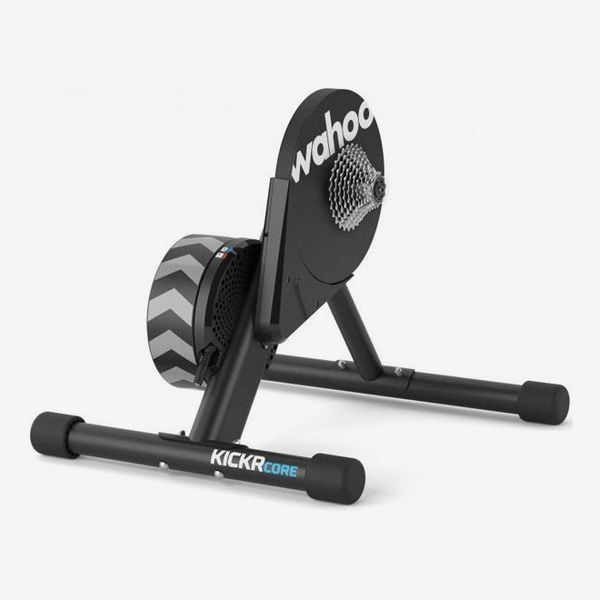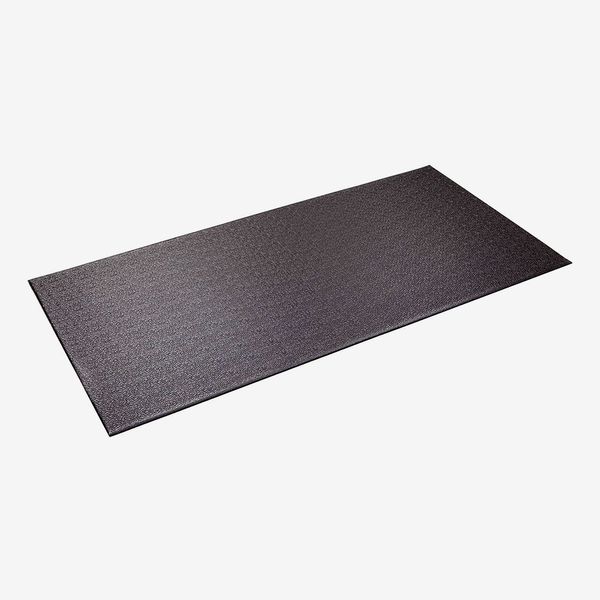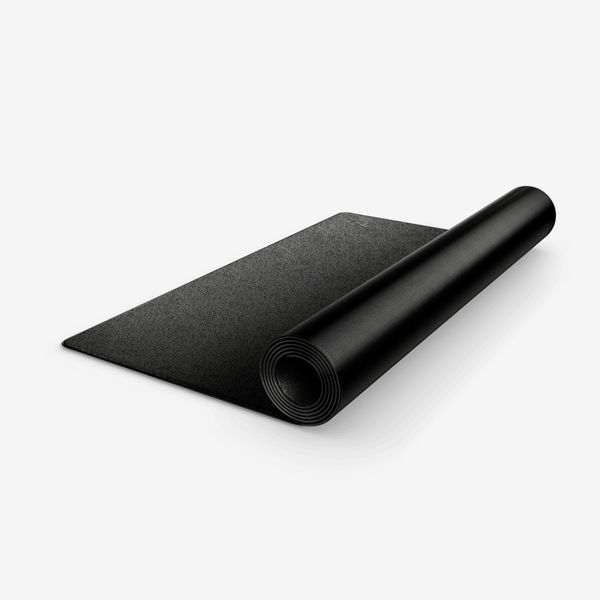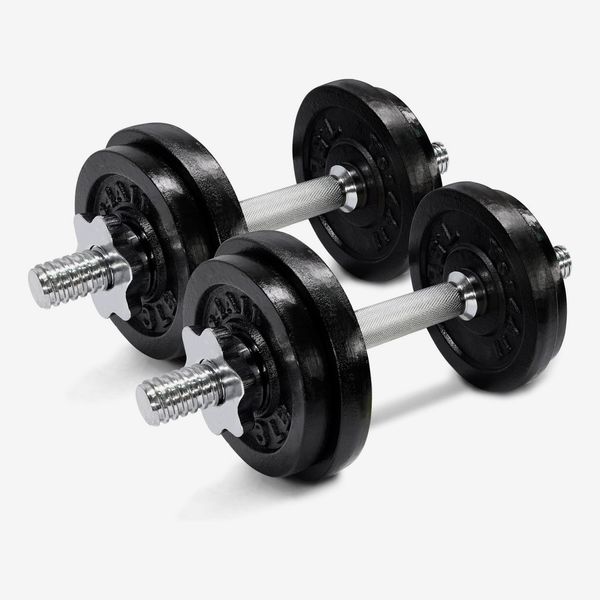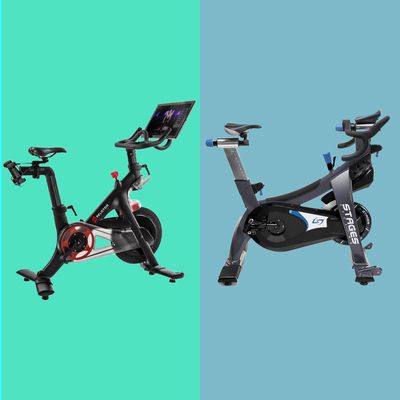
In this article
As a runner, I used to negatively associate stationary bikes with either bad weather or being injured. But as I started to shed my preconceived notions and the more I started to use them for actual workouts, the more I realized how effective they are for serious — and low-impact — exercise.
But all exercise bikes are not created equal. The Peloton changed the modern-day exercise bike as we know it. But since it launched in 2012, a whole slew of Wi-Fi-connected spin bikes have flooded the market. Some will let you join live classes or work out with a virtual personal trainer from the comfort of your own living room, while others are simply emulate a long bike ride.
“Shopping for a bike is like shopping for an appliance like a blender,” says Lindsey “Gater” Gaterman, group fitness instructor and cycle lead at Vital Climbing Gym in Brooklyn. “It’s worth buying the pricier option, rather than trying to find some cheap one. If you get the cheap one, you’re just going to regret it. It’s going to break. And eventually, you’ll just end up having two or trying to sell one.” She recommends investing in a bike that will offer longevity; cheaper, less-recognizable brand-name options will likely cause more headaches down the road. “Things fall apart really easily,” she says. “For a lot of the older or cheaper models, it’s hard to find singular things like knobs or wheels to replace.”
To help you find the best one for you and your preferred workout intensity, we talked to experts to find out what they recommended, dug through our fitness and cycling archives, and pulled out our staff-favorite exercise bikes.
What we’re looking for
Resistance
Resistance is what makes your indoor-cycling session a challenge, and the resistance mechanism that a bike features will have an impact on its noise level and ease of repair. Magnetic resistance has become more and more popular (and most of the bikes on this list use magnetic resistance); they’re quiet but generally more expensive than the more mechanical flywheel with friction or air resistance.
Bluetooth or Wi-Fi capability
The main advancement in exercise-bike technology over the past decade has been the ability to connect to the internet and other devices. Indoor bikes like Peloton are Wi-Fi-enabled, so you can stream programs straight to your bike. Others are enabled with Bluetooth, so you can connect a heart monitor or another device. Some have none of the electronic connectivity, which makes them much cheaper.
Screen or device mount
Some exercise bikes come with built-in screens that allow you to follow along with instructors, or they might come with a spot to place your phone or tablet to watch something while you ride. Others will come with a power meter or a small LCD display that shares your workout metrics as you ride. It comes down to how much guidance you want. “When I first bought my home bike, I personally didn’t need a screen because I could just guide myself through all of my own classes,” Gaterman says. “But for someone like my friend’s husband, who asked me which bike he should get his wife for her birthday — she might not have a clue what to do, so a screen would probably be a priority for her.”
Pedals and shoe compatibility
“Pedals, pedals, pedals. They’re super-important, because you don’t want to get stuck with the wrong type of pedal-and-shoe combo,” says Joseph Foley, head instructor and co-founder of cycling studio Pedal House. The types of pedals each bike has will determine what type of cleat or shoe you need. Despite the name, a clipless pedal is one that’s designed for a shoe to attach to. These will require cleats with SPD or Delta clips. Some bikes, like Peloton bikes, are only compatible with Delta cleats, which have three holes in the bottom of the shoe that click into the pedal. Other models use SPD-compatible cleats, which click into the pedals with a two-hole design. (Here’s a helpful, straightforward video that explains the difference.) Other models have flat pedals or flat ones with a toe cage — you can use any gym shoe for these two types.
Best exercise bike overall
Resistance: Magnetic | Connectivity: Bluetooth | Screen or device mount: Phone holder | Pedal/shoe compatibility: Dual-sided: SPD-cleat compatible, or flat pedals with toe cages
The Schwinn IC4 offers the same magnetic resistance that premium exercise bikes have, but at a more affordable price. If you’re looking for an entry-level bike and don’t plan to use a big screen for workout classes, the IC4 is a fantastic option. After testing the IC4 myself, I was most surprised by how quiet it is. The flywheel made no noise as I pedaled and adjusted the resistance up and down. Its platform felt solid as I transitioned from coming off the seat to pedaling on uphills to sitting back down. Strategist senior editor Jen Trolio and her husband use the IC4, and she agrees. “The ride is smooth and it’s pretty quiet. It’s stable, hasn’t gotten wobbly or noisy or anything after two full years of not heavy — but not light — use.”
The IC4 was recommended to us by Cheryl Wischhover, who has been going to indoor-cycling classes since the mid-’90s and missed going to in-person cycling classes during the pandemic. Wischhover described the bike’s magnetic resistance as “incredibly smooth and quiet.” The bike itself is easy to adjust in all directions, so any family member can use it: “I’m five-foot-five, and my teen son is five-11, and we both feel comfortable on it.”
If you’re interested in the group-workout experience, you can adapt this bike to make it work: There’s a built-in holder for your iPad or phone on the handlebars, a USB outlet for charging, and an arm-strap heart-rate monitor to track your performance. Trolio says it “pairs really easily with Bluetooth and it pairs with the Peloton app to tell you how fast you are going.” But Trolio found it a bit tricky to sync the bike’s resistance with the Peloton app. “There is some trial and error in figuring out how to translate it,” she says. Your cadence, which is measured by your pedal revolutions per minute (RPM), is displayed on the LCD display, but Trolio notes that the RPM isn’t displayed as a number, but rather “a digital visual, almost like a bar graph or sound board line,” which, for Trolio, made it difficult to pinpoint if she was riding at 95 RPM versus 100. However, Trolio says the RPM data feels more accurate while connected to the app, rather than the bike’s LCD display itself. Wischover says that for riders who really want hard-core data and power output, “there are countless threads in the Facebook group about how to Frankenstein a setup using apps like Kinetic and Wahoo.” If that sounds like too much work, check out our review of the more easily connectible Peloton, below — but if you’re looking for maximum flexibility for all levels of rider, you can’t do much better than the Schwinn IC4 (especially at this price point).
Best (less expensive) exercise bike
Resistance: Friction | Connectivity: No Bluetooth or Wi-Fi | Screen or device mounts: LCD display with phone or tablet holder | Pedal/shoe compatibility: Dual-sided: SPD-cleat compatible, or flat pedals with toe cages
This Schwinn exercise bike is similar to the IC4, but it uses a flywheel instead of magnetic resistance. Because of this, I’ve found the ride not quite as smooth as the IC4, but you’re looking for an affordable entry-level bike, it’s hard to find a better value pick than the IC3.
It also comes recommended by our senior writer Liza Corsillo, who bought the IC3 during the height of the pandemic after canceling her gym membership. She considered the IC4, and says that this model is more bare-bones, but for her and her husband, “the extra features were not worth the extra $300,” she says. “Like the IC4, the IC3 has double-sided pedals so you can use sneakers or clips, and it’s fully adjustable. Corsillo says it’s louder than the IC4, but “not so loud that it’s a distraction.” She adds that she likes the feedback of the “slight whirring sound it makes when you really push yourself.” It doesn’t have Bluetooth, which means you can’t connect your phone to it, so if you’re trying to dial in a specific resistance (rather than going off feel), you might want to consider a different model, like the Stages or Peloton bikes below.
In general, this isn’t a great bike for serious cyclists who want to track their stats. “But as someone who just discovered Peloton and indoor cycling in general, I’ve found it to be a game changer,” Corsillo adds. “Whether I’m biking to an episode of Bridgerton or to a 20-minute Beyoncé ride, I still end up working up a good sweat — and having a pretty good time.”
When it comes to value, artist Andrew Kuo says it’s the best investment he’s made in exercise equipment. “$700 seems like the challenge, but the challenge is actually getting on that thing. I know a lot of my friends who have it and it just sits there, but it is possibly the easiest way in New York City to get a real deal workout,” he says. “You can use it casually, too, and you don’t have to leave your house.”
Best durable exercise bike
Resistance: Magnetic | Connectivity: No Bluetooth | Screen or device mounts: Screen or device holder available as add-on | Pedal compatibility: SPD clips and toe cages
Thanks to its unique shifting mechanism that allows you to change resistance in chunks rather than more gradually with a dial, the SC3 closely replicates the feeling of shifting gears on a bike. “It’s the best bike for mimicking what it’s like to ride outside,” says Foley of Pedal House. “I always recommend the SC2 bikes because of their durability,” adds Foley, who uses these bikes for the cycling classes he teaches at Pedal House. (The Stages SC3 is the newer model of the SC2. The biggest difference between the two versions is that the SC3 comes with a small digital power-meter console.) “If these can last through roughly 300 hour-long classes a month, with our speed and what we do to the bike, then they’re a very good long-term investment. It’s a bike you could have for decades.” It doesn’t come with a dedicated spot to hold your tablet or phone, but you can buy one separately as an add-on.
Gaterman loves her Stages SC3 bike for its shift feature. “It adds an element of resistance that isn’t there on the Peloton bike or most traditional Schwinn bikes. And when you shift, it’s like adding a lot of resistance in a short amount of time,” she explains. “So if an instructor is telling you to go from easy to hard with a traditional dial and nothing else, you’re gonna have to turn it up a lot to finally get there. With the shifter, I can’t really cheat because it adds resistance really quickly.”
Best exercise bike with screen
Resistance: Magnetic | Connectivity: Bluetooth and Wi-Fi | Screen or device mounts: 21.5” HD touchscreen | Pedal/shoe compatibility: Delta-cleat compatible
These days, Peloton is all but synonymous with at-home cycling, and for those who want to get in-depth about their stats, as well as have access to guided workouts, it’s hard to do much better. When former Strategist senior writer Karen Iorio Adelson tested a slew of smart gym equipment, she concluded that the Peloton — with a constant stream of new rides and playlists — is the best option for “spinning-class devotees who love the community aspect but would rather not schlep to the studio.” She explains, “With the large HD display and bike that’s identical to the one you’ll find in the studio, an at-home Peloton workout is probably the closest you’re going to get to an in-person workout with one of these machines.” But heads up: The purchase of the bike doesn’t include the monthly membership to its app. That costs an additional $39 a month and is a must-have if you’re trying to make the most of your Peloton. And for those who have an older model, the company offers a free replacement seat post.
Brooklyn–based cyclist and filmmaker Jacob Krupnick, who has been using his Peloton bike since 2019, is always looking for ways to keep cycling in the winter, and the Peloton has filled that gap for him. “I ride outside most of the year and only pay for membership from late October until April, when the New York weather is pretty shifty,” he says. Krupnick especially likes Peloton’s encouraging instructor program. “You quickly find the instructors who seduce you with their X-ray eyes and bionic physiques and boundless optimism, and off you go. It’s easy to on-board, it’s easy to feel positive, and it’s lovely to reduce the commute to exercise places down to zero.” Krupnick has noticed that the bike’s resistance and output settings have become less accurate over the years — he says he’s always riding more heavily than the instructors call for — but has yet to recalibrate the bike.
Stephen Pennington, a home-fitness enthusiast based in Dayton, Ohio, has logged hundreds of rides on his original Peloton bike since 2017, with no mechanical issues. He says Peloton’s cast of instructors has made the investment worth it: “Personal trainers on other apps and devices drive me nuts, because I feel like there’s an inauthenticity to them. The Peloton instructors are incredibly great to listen to and motivating. I can’t think of a single one of them that I wouldn’t take a class from.”
Editor’s note: On May 11, Peloton recalled its original Peloton Bike model sold from January 2018 to May 2023 in the U.S. after reports of seat posts breaking during use (the issue has since been resolved). The company is offering a free replacement seat post, but refunds and replacements of the original Peloton Bike model “are not being offered as part of this recall,” according to Peloton.
Best exercise bike for classes
Resistance: Magnetic | Connectivity: Bluetooth and Wi-Fi | Screen or device mounts: 23.8” HD anti-reflective touchscreen | Pedal/shoe compatibility: Delta-cleat compatible
If you’re willing to splurge a little more, consider Peloton’s Bike+, which is designed specifically to sync to classes: It features a large 23.8-inch anti-reflective screen that rotates 360 degrees, allowing you to follow along with workouts off the bike; automatic resistance adjustments (instead of manually) that match your instructor’s; and full integration with the Apple Watch. If you plan on taking fitness classes frequently, the Bike+’s features make it a worthy investment.
Best exercise bike for Bluetooth-connected fitness
Resistance: Magnetic | Connectivity: Bluetooth | Screen or device mounts: Phone or tablet holder | Pedal/shoe compatibility: SPD clips and toe cages
The C6 comes recommended to us by Strategist contributor Tobey Grumet Segal, who found it a more affordable alternative to the Peloton (and the Schwinn IC4, too). “While it doesn’t have the fancy 22-inch touchscreen that Peloton provides, you can use pretty much any phone or tablet to connect and stream classes,” she writes. The C6 is a great option for folks who don’t need a dedicated fitness subscription or a large video screen but still plan to use Bluetooth devices to track their workouts.
Best exercise bike for short or tall riders
Resistance: Magnetic | Connectivity: Bluetooth | Screen or device mounts: Phone or tablet holder | Pedal/shoe compatibility: Dual-sided: SPD-cleat compatible, or flat pedals with toe straps
We learned about this Keiser compact indoor bike while reporting on the best big-ticket home-gym items. The unique V shape means that it can accommodate riders as short as four-feet-ten and as tall as seven feet, without making them clamber over a bar. This bike’s compact design puts the magnetic resistance wheel in the back, rather than the front, and takes up less space than a treadmill or elliptical.
Best exercise bike with air resistance
Resistance: Air | Connectivity: No Bluetooth or Wi-Fi | Screen or device mounts: Display console with reading rack available as add-on | Pedal/shoe compatibility: Flat pedals with footstraps
Old-school, wind-powered air bikes with handles, which were originally popular in the 1970s and ’80s, are having a comeback, according to Nick Clayton, personal training program manager at the National Strength and Conditioning Association. “You’re biking and pushing and pulling at the same time, so it’s low-impact, but as far as working muscles and getting the most out of any kind of interval session, it’s probably the best bang for your buck,” he says. Simple to use, easy to set up, and with no motor to potentially break down, it’s a valuable addition to any home gym.
Best smart bike trainer
Resistance: Electromagnetic | Connectivity: Wahoo app and third-party training | Screen or device mounts: None | Pedal/shoe compatibility: Whatever pedal setup you use on your bike
When Strategist tech writer Jordan McMahon moved from California to Arizona, he was looking for a way to keep his cycling momentum going without spending too much time riding in the hot sun. A lot of his peers in the cycling community recommended a stationary bike trainer as a good solution, since you can use the bike you already have for indoor training (and get the same feeling riding it). Compared to the stationary bikes in this list, setting up the Kickr Core is a little more hands on, and according to McMahon, you’ll need to buy a chain whip and cassette tool to attach your bike to the trainer, but it only takes about 15 minutes from start to finish. After that, you sync it with Wahoo’s app to control the resistance. You can pair it with third-party workout services like Zwift (the one he uses) to do guided workouts, and “it’ll even automatically adjust the trainer’s resistance to match the workout you chose,” McMahon says. Those features make it similar to a regular trainer but “with the smarts of a Peloton,” he says. “Unlike a Peloton or Schwinn, when you’re not using the bike, you can roll your bike back on the Kickr to prop it against a wall and make some space on your floor — sort of like a makeshift bike stand.”
Some more at-home workout essentials we’ve written about
Our experts
• Karen Iorio Adelson, former Strategist senior writer
• Nick Clayton, personal training program manager at the National Strength and Conditioning Association
• Liza Corsillo, Strategist senior writer
• Joseph Foley, head instructor at and co-founder of Pedal House
• Lindsey “Gater” Gaterman, group fitness instructor and cycle lead at Vital Climbing Gym
• Andrew Kuo, artist and co-host of the podcast Cookies Hoops
• Jacob Krupnick, Brooklyn–based cyclist and filmmaker
• Jordan McMahon, Strategist writer
• Stephen Pennington, Dayton, Ohio-based home-fitness enthusiast
• Jen Trolio, Strategist senior editor
• Cheryl Wischhover, Strategist contributor
The Strategist is designed to surface the most useful, expert recommendations for things to buy across the vast e-commerce landscape. Some of our latest conquests include the best workout leggings, gym bags, workout gear, flattering sweatpants, running shorts, and sports bras. We update links when possible, but note that deals can expire and all prices are subject to change.
Every editorial product is independently selected. If you buy something through our links, New York may earn an affiliate commission.
